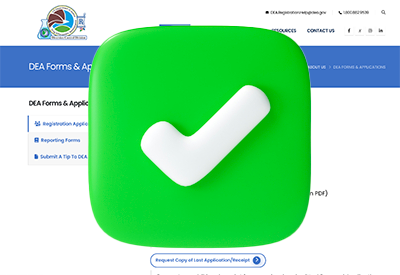Updates on lithium from the 2023 International Bipolar Conference.
Publication Date: 7/17/2023
Duration: 20 minutes, 17 seconds
Transcript:
CHRIS AIKEN: Bipolar disorder is not what it used to be, and today we’ll bring you updates on lithium from the 2023 International Bipolar Conference.
Welcome to the Carlat Psychiatry Podcast, keeping psychiatry honest since 2003. I’m Chris Aiken, the editor in chief of the Carlat Report.
KELLIE NEWSOME: And I’m Kellie Newsome, a psychiatric NP and a dedicated reader of every issue.
We noticed a lot more chatter about lithium at the 2023 bipolar conference than we did at past conferences. Patients spoke of it as life-changing, and researchers were recommending it first line. One even said that the main advantage of the antipsychotics was that they reminded us all how well comparatively well tolerated lithium is. There’s a reason for this. More studies have come out in the past few years showing superior benefits with lithium. Studies in children encouraged the FDA to lower the age cut-off for their approval from 12 to 7. On the medical side, studies suggest that lithium treats and prevents COVID and other viral illnesses. It has anti-aging effects at the level of the DNA, and prevents dementia, stroke, cancer, and neurologic illnesses. Lithium has cardiac risks – mainly arrhythmias – but it also promotes cardiac remodeling after an injury to the heart.
And in 2023 the International Society for Bipolar Disorders put out a position paper that recommended lithium first-line in the early course of bipolar disorder.
Today, you’ll learn that lithium goes beyond symptom management to improve functioning, but its benefits take a few months to kick in. It’s better tolerated than most mood stabilizers in the ways that patients care about. But despite all this good news, rates of lithium prescription on are the decline, and that’s where we need this practice upgrade for 2023: Use more lithium. But first, a preview of the CME quiz – find a link to the full two-question test in the show notes
1. Which of these is a sign of a lithium responder
A. Prominent depressive episodes
B. Clear separation of manic and depressive symptoms
C. Comorbid alcohol use disorder
D. Early onset of bipolar disorder before age 12
CHRIS AIKEN: The bipolar conference opened with an update on lithium by Michael Bauer and Michael Gitlin, two leading lights in bipolar disorder who recently published a textbook on lithium. It’s published by Springer, which means you probably have free access to it through the Springer online collection if you belong to an academic medical library. We’re going to interview Michael Gitlin later this year for a full run-down on how to use lithium, but we’ll share here some of the useful lithium updates, starting with why use it?
Nassir Ghaemi has called lithium the closest thing to a cure in bipolar disorder because it works better than other mood stabilizers at preventing relapse and it addresses the actual pathophysiology of the disease. For example, lithium stabilizes the biological clock, altering the expression of circadian rhythm genes; it increases mitochondrial reserve capacity, which is implicated in bipolar. It is neuroprotective – preventing many of the negative effects on brain structure that we see with chronic bipolar disorder. One study that drove this point home for me is from Nature in 2016, titled Differential responses to lithium in hyperexcitable neurons from patients with bipolar disorder.
They literally took brain cells derived from the brain hippocampus of patients with bipolar disorder. This technology has been making psychiatric headlines for the past year, called organoids or pluripotent stem-cell research. True to life, they found these cells had hyperexcitable energy stores – the mitochondria – and that lithium reversed this hyperexcitability.
That suggests that if you give lithium early it might prevent the illness from getting out of hand, and that is what studies have found. This year, the ISBD put out guidelines on what to do in the early in the course of bipolar disorder that recommended lithium first line. They concluded that lithium worked better than anticonvulsants at preventing new episodes, and better than antipsychotics at improving overall functioning. Here’s a sentence that struck me “In the early course of bipolar disorder, adherence to antipsychotic agents was also associated with worse psychosocial functioning over the first one or two years of follow-up when compared to those who were not compliant with antipsychotic treatment and to those on lithium.” In other words, lithium improved psychosocial functioning over the long term, while antipsychotics seemed to make it worse, even worse than those who weren’t compliant with the med.
This difference in functioning was noted long ago, in a 1979 paper by Fred Goodwin. He concluded that antipsychotics worked faster, but lithium worked better to improve functioning. Dr. Gitlin agreed. He even said that if you read the early papers of antipsychotics in bipolar disorder from the 1960’s and 1970’s and just substituted the word chlorpromazine for olanzapine you’d find they are nearly identical to today’s papers.
Gitlin warned us that antipsychotics sometimes look more effective than lithium in studies of mania because of their speed of onset and ability to bring down agitation and insomnia, but that if we look beyond symptom rating scales we see better results across the board with lithium.
KELLIE NEWSOME: 1 in 3 people with bipolar disorder have a full recovery on lithium. Another 30% get significantly better, and some simply don’t respond. You never know who will be a good responder, so it’s worth a trial – few other treatments offer the promise of a long-term recovery. And here’s a pearl – Dr. Gitlin emphasized that lithium is a slow actor, so unless you are using it for acute mania wait at least 4 months to judge the results of that trial, and get the level right – 0.6-0.8 for depression and 0.8-1.1 for mania. If your patient is over age 60, you might need to aim lower, about 30% lower, but children require the same levels as adults, and lithium is FDA approved down to age 7 now. 7 – how do you remember that – because lithium was the lead ingredient in the early soft drink 7Up – so it’s approved for ages 7 and up. Or, if you’re a basic chemist, you’ll know that lithium’s molecular weight is 7.
There are signs that suggest a patient will respond well. Lithium responders are the ones with classic, textbook bipolar. Their manias or hypomanias are pure and euphoric, maybe with some irritability but not a lot of mixed states. They don’t have many comorbidities or substance use disorders, and they have a pretty normal personality when they aren’t in a mood episode. Their episodes follow the nature law of “what comes up must come down” with depressions that follow the manias or hypomanias. They may be bipolar I or II, but their mood episodes are cleanly separated and resemble the textbook description in their symptoms. They are more likely to have a family member with bipolar, and their age of onset is also classic for the illness – in the late teens, age 15-20. And if they have a family member who responded to lithium, there’s a good chance they will too.
If you do decide to try lithium, start low and raise slowly. I usually start at 300mg/night for 5-7 days and raise every 5-7 days from there, but I might start at 150mg if the patient is nervous about lithium as many patients are. Lithium is one of the best tolerated mood stabilizers when it comes to problems that patients care about – weight gain, fatigue, cognition – in my experience about 1 in 10 patients can’t tolerate it usually due to emotional flattening. At the conference, Dr. Vieta presented a new meta-analysis with a surprising result – lithium had no weight gain compared to placebo.
CHRIS AIKEN: That will surprise a lot of patients – and indeed many report the opposite on it – but I recall a meta-analysis from 10 years ago that actually found weight loss on lithium when all the short term studies were lumped together. Tell your patients that they are in control of this problem – lithium will make them thirsty, so drink water, not caloric beverages, and not diet sodas which cause weight gain in indirect ways.
I believe that patients are more prone to a nocebo effect on lithium than most other meds. In other words, they have a psychological fear of it, and that causes their body to amplify any side effects. They need a lot of education before starting it… I have a slide show on my website that I show them
moodtreatmentcenter.com/lithiumslides
If the fear is palpable, I’ll start with 150mg and make clear that the goal is to tolerate it – that it won’t make them feel better at that dose. After a few weeks, these patients come back with a sense of accomplishment, proud that they were able to tolerate a “heavy duty med” like lithium, and we raise it up.
I’ll also start with the controlled release formulation, because most side effects are lower with that – particularly nausea which is the most common reason people reject it at first. Dr. Gitlin agreed, though he will often change lithium to the instant release form once the patient has been on it a few months. At that point, there is little chance of nausea – they’ve adjusted to that – and he is more concerned with the kidneys. The evidence is not entirely convincing here, but there are some studies suggesting better renal function with the instant release form. But Dr. Gitlin and I agree on one area where the evidence is clear: Lithium is safer for the kidneys when dosed all at night. He will sometimes divide it up during the day when starting it to reduce nausea, but in the end he aims for evening dosing.
Another update on lithium is that we’ve become more aware of parathyroid dysfunction on it. You’ll pick up on this through elevated calcium levels, and Dr. Gitlin recommends checking those yearly and referring to an endocrinologist if they are high.
KELLIE NEWSOME: One of the most interesting updates came from history, and it’s a real blow to us Aussie’s who celebrate the discovery of lithium by our own John Cade. Well, it turns out a Dane beat him to it
In 1894, the Danish psychiatrist Frederik Lange published a report of successful treatment with lithium in 35 patients with recurrent depression. Lange used similar doses to what we use today, and his results were impressive, but there was one problem: His theory was wrong. Lange believed that manic depression was due to accumulation of uric acid and that lithium helped remove this chemical. Emil Kraepelin, the German psychiatrist who laid the foundations of bipolar disorder, actually read Lange’s paper, but decided not to try lithium because he believed the theory was bunk, even if the results were positive. 50 years later, in 1949, Australian John Cade picked up on the uric acid theory and brought lithium into the modern age.
CHRIS AIKEN: When I was in medical school we were taught that Cade had the right idea for the wrong reason, but even that may be wrong. Cade’s idea that uric acid causes bipolar has a long history, dating back to the 1840’s when doctors first discovered elevated uric acid in gout. Gout is painful, and it tends to afflict people who already have psychiatric problems – those with alcohol use disorder – so doctors started to believe that the elevated uric acid made people moody and irritable. The words “gouty mania” and “gouty melancholia” spread into popular discourse. Lithium lowers uric acid so it was natural to explore lithium as a treatment for bipolar.
Fast forward to the 2000’s and we find psychiatrists have revived the uric acid theory of bipolar disorder, including prominent NIMH researchers Carlos Zarate and Husein Manji. Uric acid is indeed elevated during mania, and lithium lowers it. The theory led to five positive randomized controlled trials in mania with the anti-gout med allopurinol. I include allopurinol in my 5th line treatments, and have had some success with it.
KELLIE NEWSOME: Imagine if Kraepelin had tried lithium instead of bromides, his treatment of choice. We’d be dating the birth of modern psychopharmacology to 1900 instead of 1950. Freud would have had a harder time capturing the public eye as patients marched out of Kraepelin’s asylum with this new cure.
And now for the study of the day, A Multicenter Double-Blind, Placebo-Controlled Trial of Escitalopram in Children and Adolescents with Generalized Anxiety Disorder, by Jeffrey Strawn and colleagues.
As the title suggests, this was a large industry-sponsored randomized controlled trial of the SSRI escitalopram in 275 children and adolescents with generalized anxiety disorder, GAD.
CHRIS AIKEN: Here's the result. After 8 weeks, escitalopram brought down anxiety to a mild degree over placebo, but there was a greater risk of suicidality (1.5 vs 9.5%) in the treatment arm. Unfortunately that's a risk we are used to seeing in antidepressant studies in children and anyone under age 25, and we don't know why. It could be because of akathisia, other side effects that cause people to feel worse while it still hasn't treated their depression/anxiety, or a bipolar-activation syndrome - we don't know and this study doesn't help us understand the reason.
KELLIE NEWSOME: The big news about this study is that it prompted the FDA to lower the approval limit for escitalopram down to age 7. Previously, it was only approved for GAD in adults, although in 2009 it gained dubious approval for major depression in teens down to age 12. We say “dubious” because the approval was based on two trials – one positive and one negative – but unfortunately those are pretty good odds in pediatric depression, where the majority of antidepressants fail, close to 20 failed trials so far. Only fluoxetine (Prozac) has a steady track record of success in the young, and it’s use in depression is FDA approved down to age 8.
CHRIS AIKEN: SSRIs and SNRIs have more success in pediatric anxiety than they do in pediatric depression. Other agents with positive controlled trials in pediatric GAD include sertraline and venlafaxine, but prior to this escitalopram study the only one with actual FDA approval pediatric GAD was duloxetine (Cymbalta).
Escitalopram Lexapro has been generic since 2012, so we’re not sure why the manufacturer launched this study in 2019. That manufacturer is AbbVie, who gained the Lexapro patent when they bought Alergen, who earlier had bought it from Forest Pharmaceuticals. This study brings an ironic end to some costly misdeeds by Forest. In 2010, the company paid 313 million in fines to the Department of Justice for illegal promoting Lexapro off-label in children and teens.
KELLIE NEWSOME: Everyday Dr. Aiken posts a practice-changing study on his LinkedIn and Twitter feeds, @ChrisAikenMD
CHRIS AIKEN: Join us next time, where we’ll look at the role of the recently gone generic Lurasidone in bipolar depression.
KELLIE NEWSOME: Earn CME for this episode from the link in the show notes. Your support helps us free of influence from the pharmaceutical industry and – on that account – keep out of trouble with the DOJ.
__________
The Carlat CME Institute is accredited by the ACCME to provide continuing medical education for physicians. Carlat CME Institute maintains responsibility for this program and its content. Carlat CME Institute designates this enduring material educational activity for a maximum of one quarter (.25) AMA PRA Category 1 CreditsTM. Physicians or psychologists should claim credit commensurate only with the extent of their participation in the activity.


_-The-Breakthrough-Antipsychotic-That-Could-Change-Everything.jpg?1729528747)



